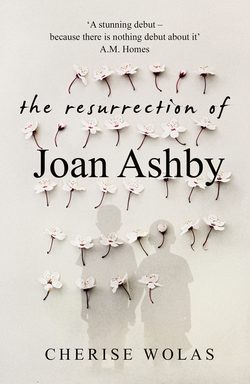Читать книгу The Resurrection of Joan Ashby - Cherise Wolas - Страница 8
LITERATURE MAGAZINE Fall Issue (RE)INTRODUCING JOAN ASHBY
ОглавлениеJoan Ashby is one of our most astonishing writers, a master of words whose profound characters slip free of the page and enter the world, breathing and enduring, finding pain or solace, even happiness, seeking a way forward, or a way out, their lives keenly and deeply observed. From the muscular to the sublime, her language renders precisely the shadowy contradictions she finds in human behavior, capturing, distilling, and purifying the complex, ambiguous, often porous lives her people navigate. Through the powerful lens of her work, readers discover the secret hearts of their own temperaments.
Enthralling, riveting, often shocking, her stories are as undeniable as her talent. She has said that reaching the marrow of her people, their quintessential facets, requires her own fortitude, an ability to simultaneously engage and detach, to be passionate yet impassive, and sometimes even remote.
We have been allowed to explore the notebooks she once religiously maintained and still possesses. Labeled Favorite Words, Books I Am Reading, Quotes Never to Forget, Stories, and How to Do It, they are fascinating reading, for in them the young writer announces, if only to herself, who she is, who she intends to be, what she intends to accomplish in her life.
In the notebook titled How to Do It, thirteen-year-old Joan Ashby articulates nine revealing precepts she was determined to follow in order to become a writer:
1. Do not waste time
2. Ignore Eleanor when she tells me I need friends1
3. Read great literature every day
4. Write every day
5. Rewrite every day
6. Avoid crushes and love
7. Do not entertain any offer of marriage
8. Never ever have children
9. Never allow anyone to get in my way
Eight years after penning these precepts, she burst onto the literary scene with her brilliant collection about incest, murder, insanity, suicide, abandonment, and the theft of lives. She was just twenty-one, the year was 1985, and Other Small Spaces was an extraordinary accomplishment. An instant sensation among reviewers, critics, and loyalists of literary fiction, it was a surprise entry on the New York Times hardcover best-seller list, where it held for two weeks. The subject matter was disturbing, but the book’s unique heralding quality deeply touched readers whose adoration of the work turned rabid and created word-of-mouth interest beyond its initial fan base. Several months later, when this unsettling debut by such a young writer was crowned with the National Book Award, the anointment generated unprecedented attention and controversy. As a result, an enormous domestic audience searched it out, and when the collection was translated into thirty-five languages, its audience became universal. Amidst such excitement and furor, the book reappeared on the bestseller list and remained there for a year, the rare story collection to attain such status. Soon, Joan Ashby was a writer known throughout most of the world.
In 1989, four years after the publication of Other Small Spaces, Ashby continued her tremendous success with the compelling and complex Fictional Family Life, a collection of superbly interlocked stories with a sixteen-year-old boy at its center.
Fictional Family Life spectacularly demonstrated Ashby’s vast range, and the world again responded. At twenty-five, she had a second acclaimed collection. When the book was shortlisted for the Pulitzer Prize, it catapulted to bestselling status and remained on the New York Times list for its own remarkable year.
It has been nearly three decades since Joan Ashby published anything new, and in our desire to introduce, or reintroduce, Joan Ashby, we are reprinting excerpts from both of her collections.2
We start with “The Last Resort,” and “Bettina’s Children,” the stories that bookend Other Small Spaces.
